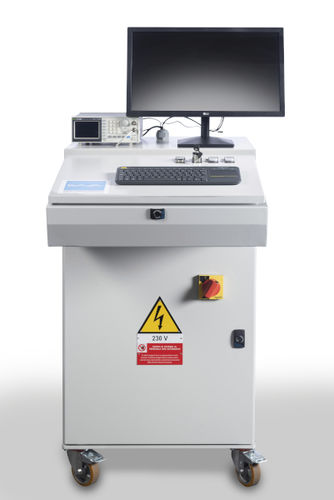Unlocking Insights: The Power of Modern Data Acquisition Systems
Unlocking Insights: The Power of Modern Data Acquisition Systems
Blog Article

In today's fast-paced digital landscape, the ability to collect and analyze data has become a cornerstone of effective decision-making. Organizations across various sectors are increasingly recognizing the importance of robust data acquisition systems in their operations. These sophisticated frameworks enable businesses to gather essential information from multiple sources, transforming raw data into valuable insights that drive innovation and efficiency.
Discover
Modern data acquisition systems are more than just tools for capturing information; they serve as the backbone of strategic planning and operational excellence. With advancements in technology, these systems can now handle vast amounts of data in real-time, providing a comprehensive view of performance metrics, customer behavior, and market trends. This shift not only enhances accuracy but also empowers organizations to respond swiftly to changing conditions, ultimately unlocking new opportunities for growth and development.
Overview of Data Acquisition Systems
Data Acquisition Systems, or DAS, are integral tools used in various fields to collect, analyze, and interpret data from diverse sources. These systems typically consist of hardware and software components that work together to gather data from sensors or instruments. The primary function of a data acquisition system is to convert real-world analog signals, such as temperature, pressure, or voltage, into digital form. This transformation enables the data to be processed, displayed, and stored for further analysis.
The rise of modern technology has significantly enhanced the capabilities of data acquisition systems. With advancements in sensors and connectivity, data can now be captured with greater precision and speed. Additionally, data acquisition systems are increasingly becoming more sophisticated, incorporating features such as wireless communication and cloud-based storage. These improvements allow for remote monitoring and real-time data analysis, making them essential in applications ranging from industrial automation to environmental monitoring.
As organizations continue to prioritize data-driven decision-making, the demand for efficient data acquisition systems is only expected to grow. They play a crucial role in enabling businesses and researchers to gather accurate data, leading to improved insights and enhanced operational efficiency. By leveraging the power of modern data acquisition systems, companies can unlock valuable insights that drive innovation and support strategic objectives.
Key Technologies in Data Acquisition
Data acquisition systems rely on a variety of core technologies that enhance their functionality and performance. One of the primary components is the sensor, which detects physical phenomena such as temperature, pressure, and light. These sensors convert these physical signals into electrical signals that can be processed by the system. Advances in sensor technology, including wireless sensors, have made it easier to collect data from remote or hard-to-reach locations, increasing the versatility of data acquisition systems across different industries.
Another critical technology is signal conditioning, which improves the quality of the signals obtained from sensors. This process involves amplifying, filtering, and converting signals into a usable format for further analysis. High-quality signal conditioning ensures that the data collected is accurate and reliable, which is essential for making informed decisions based on this information. Modern data acquisition systems often incorporate advanced signal processing techniques that enhance the detection of subtle changes in the environment, enabling more precise monitoring and analysis.
Data storage and processing capabilities are also essential technologies in data acquisition systems. These systems utilize powerful storage solutions and cloud-based platforms that can handle vast amounts of data generated in real-time. This capability allows for quick access, analysis, and visualization of data, leading to more proactive responses and insights. The integration of artificial intelligence with data acquisition systems is rapidly evolving, enabling predictive analytics and automated decision-making, further demonstrating the transformative power of modern data technologies.
Applications and Benefits of Modern Systems
Modern data acquisition systems have revolutionized various industries by enabling real-time monitoring and analysis. In sectors such as healthcare, these systems allow for the continuous collection of patient data, facilitating timely interventions and better patient outcomes. In manufacturing, data acquisition systems monitor equipment performance, enabling predictive maintenance that reduces downtime and increases efficiency.
Another significant application is in environmental monitoring, where data acquisition systems collect data on air and water quality. This information is crucial for regulatory compliance and ensuring public safety. The ability to analyze this data in real-time helps organizations respond swiftly to environmental changes, ultimately promoting sustainability and public health.
Moreover, the benefits of modern data acquisition systems extend to enhanced decision-making capabilities. By harnessing accurate and timely data, organizations can identify trends, forecast future events, and optimize processes. This not only leads to cost savings but also fosters innovation and competitive advantage in a rapidly evolving marketplace.
Report this page